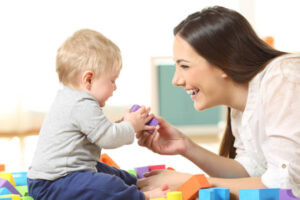
What do you love most about working for PlayWorks Therapy?
One of my favorite things about working for PlayWorks Therapy is having the opportunity to work, connect, and collaborate with such a diverse community of clients, families, therapists, and staff. The warm environment created by every individual provides continual support for clinical and personal growth and self-discovery.
What is your favorite children’s book?
I loved Walt Disney’s 101 Dalmatians. To this day, my mom jokes about how I memorized every word after asking to read it for three months straight and insisted excitedly to “look at all the puppies!” as we drove past cow pastures on the way to and from daycare each day.
What do you enjoy most about living in Chicago?
I love how there is always something to do in this city, from trying new restaurants, exploring diverse neighborhoods, and catching an improv or comedy show, to learning about its historical influence, going to a sports game, or walking along the lake. Opportunities are endless!
What is your favorite childhood memory?
My favorite childhood memories are from family vacations to Cape Cod. Aunts, uncles, grandparents, and cousins would come together for one week every year, renting the same house on Scusset Beach and spending sunny days swimming in the ocean, searching for sand dollars, playing board games, and eating enough seafood to make our bellies hurt.
Would you rather a mountain or beach vacation?
I’d be equally happy with either! It just depends on whether I’m in the mood for taking in panoramic vistas after a high-energy hike or lounging on the sand with a good book after a day spent swimming and snorkeling.
Share a proud “therapy moment” with one of your clients.
There are so many proud moments that I’ve shared with clients and their families since becoming an OT. One moment that stands out was when a little boy diagnosed with Autism Spectrum Disorder noticed me walk into his classroom, smiled, and ran across the room to give me a hug. It was the first time he initiated eye contact and engagement in almost six months of working together.
What is your hometown?
I grew up in Naples, New York.
What do you like to do in your free time?
My favorite thing to do in my free time is travel, whether a few states away to see family or across the globe to experience new cultures! I also love to read, spend time with friends, and cuddle with my kitten, Penelope.
What is your favorite therapy toy?
My favorite therapy toy is Play-Doh as it encourages imagination and creativity while targeting a variety of developmental skills. Homemade options that modify color, smell, and texture also allow for fun sensory exploration.
Share a fun fact about yourself.
I spent 11 years throughout high school and college participating in a performance-based activity called winterguard. We danced a choreographed routine to music while spinning flags, rifles, and sabres in a different themed show each year.
Caitlin Chociej, MS, OTR/L
Occupational Therapist












